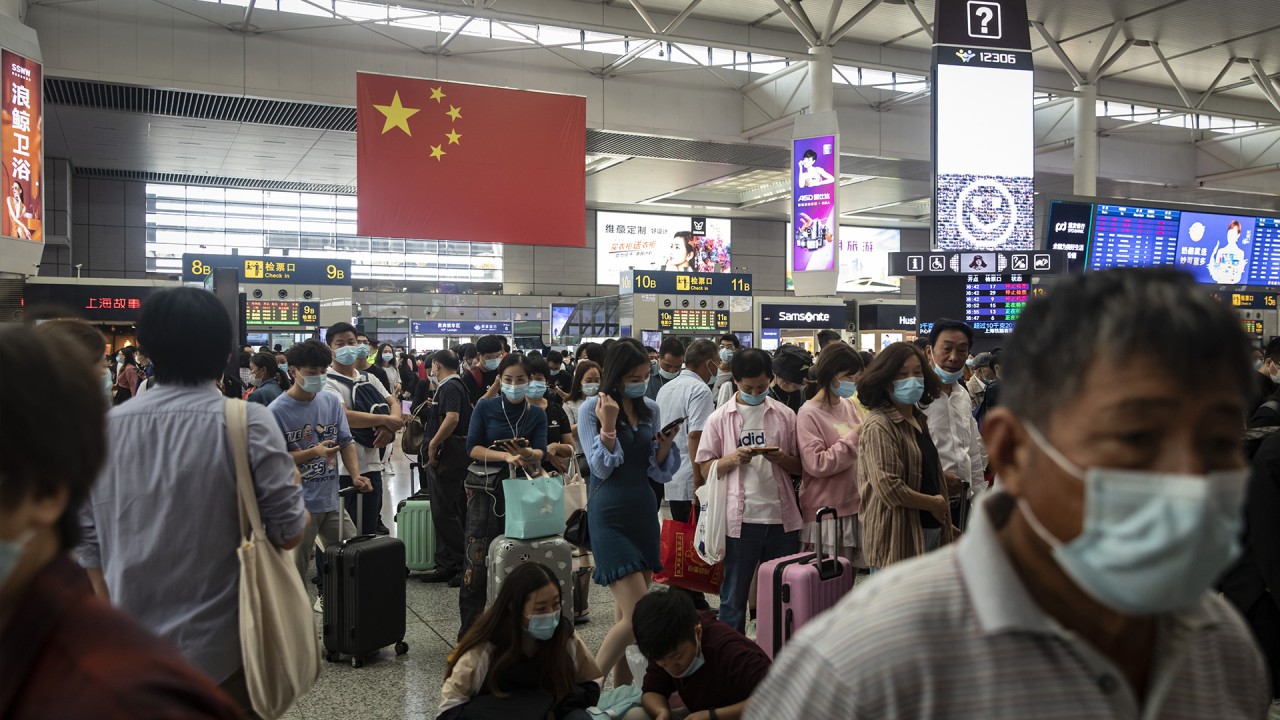
China holiday spending improves from May, but still a third below last year’s ‘golden week’
- China reported tourism revenue of 312 billion yuan (US$45.9 billion) over the first half of the ‘golden week’ holiday, a drop of 31 per cent from last year
- Although consumer spending has recovered from the height of the coronavirus, weak consumption continues to plague the world’s second biggest economy
China’s Ministry of Culture and Tourism said on Sunday that 425 million Chinese hit the road from Thursday to Sunday, the first four days of the eight-day national holiday, a drop from 542 million in the same period last year.
Tourism revenue over the period was 312 billion yuan (US$45.9 billion), a drop of 31 per cent from the first four days of the holiday last year, official data showed.
This year’s National Day holiday overlaps with the Mid-Autumn Festival, which is traditionally a time for family reunions, extending the break to eight days from the usual seven.
Even though there was a drop in tourism numbers and revenues, huge crowds were seen at popular tourist spots and many travellers had to deal with heavy congestion on major highways.
Images posted on social media show a nation that looked completely different to the one that was under strict lockdowns earlier this year. Crowds of people thronged train stations in big cities, although most people wore masks.
Consumption has picked up compared to the three-day holiday in May, when travel restrictions were still in effect for much of the country.

02:33
Millions travel as National Day opens ‘golden week’, China’s first big holiday since Covid-19
The Forbidden City, formerly home to China’s emperors, reopened on May 1 but only allowed 5,000 visitors daily. The daily limit was increased to 30,000 for the most recent holiday period.
Transactions on WeChat Pay, the digital payment service operated by Chinese internet giant Tencent Holdings, grew 83 per cent at tourist sites and 71 per cent at hotels during the first three days of the October holiday compared to Labour Day from May 1 to May 3, according to a report by WeChat on Sunday.
The number of WeChat Pay users who shopped at duty-free stores in China more than doubled over the period, while the WeChat Pay transaction volume at shopping malls and supermarkets increased over 30 per cent.
A 50 per cent rise in transactions was recorded in smaller markets including tier-three cities and below, the report showed.
A report by Meituan Dianping, the on-demand delivery giant, said orders for trans-provincial tours in the first half of September increased significantly, with popular destinations including Chongqing, Beijing, Shanghai, Chengdu and the western provinces of Ningxia, Qinghai, and Gansu.
Additional reporting by Iris Deng.

